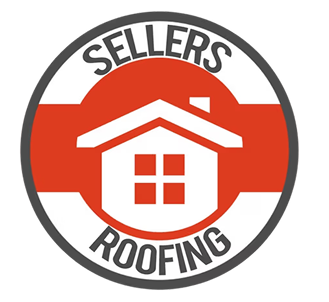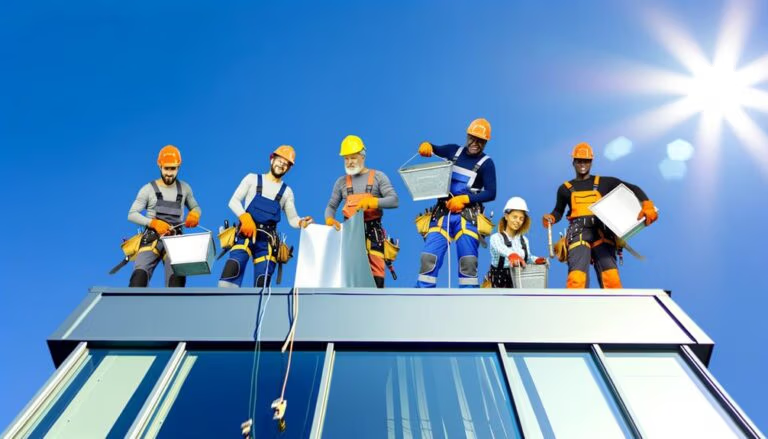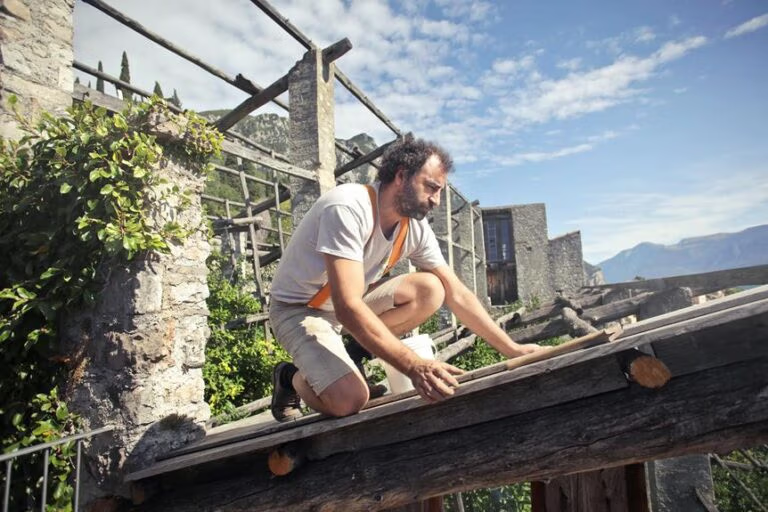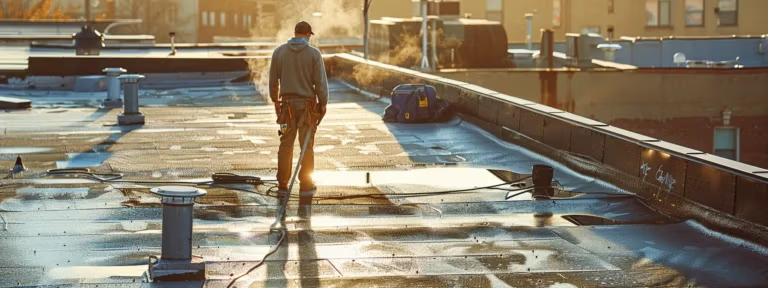A home should tell your story, and installing the best roof on your house will definitely give your home the accordance it deserves.
I know we all want good roofs, but we are not sure of the style or material to choose. High-quality roofs will offer a protective barrier to your home, improve your home’s insulation, and even increase the overall value of your home.
Knowing your roofing options will help you find an effective and affordable way to cover your house. Nowadays, we have several roofing materials and types to choose from. But then, what are the cons and pros of each, and how viable are they and what is the best type of roof?
Choosing the Best Roofing Type for your Home
To choose the best roofing type for your home, you’ll have to compare various roofing styles and materials. Moreover, you’ll also have to consider:
- Budget: Your financial muscle goes a long way when it comes to determining your roofing style and type.
- Climate: Different roofing styles and materials perform better in different climatic conditions.
- Wind: If your area is prone to strong winds and hurricanes, you’ll have to consult a professional roofing contractor in your region. They will help you choose the best type of roof suited for these conditions.
- Temperatures: Slate roofs and Metal roofs do extremely well in extremely low temperatures and heavy snowfall, while fiberglass asphalt roofs excel across all kinds of temperatures.
- Roof structure: Composite, asphalt, and metal roofs don’t weigh much, making them suitable for almost any kind of roof. Conversely, clay tiles, and slate and are heavy.
- • Design: When choosing a roof, consider selecting a design that blends with your home’s style and blends with neighborhood designs.
Best Types of Roofs

owadays, we have dozens of roof types, but this article will only discuss the best roofing types used in residential housing and other buildings.
1. Gable Roof
This is perhaps the most common type of roof. It consists of two slopes that merge together to form a common ridge at the top of the roof, forming an inverted “v” shape. These roofs are suitable for cottage-style homes, modular housing, and ranches. Advantages:
- Their simplicity makes them very affordable to most homeowners.
- The cobblestone roof provides more head space in the attic
- Rainwater flows easily to prevent leakage
- Disadvantages:
- More susceptible to wind damage
- Additional ventilation holes are required for proper ventilation
- Doesn’t look good in older or historic houses
2. Gambrel Roof
This type of roof is mostly used on farmhouses and barns. The roof of the pavilion has two slopes, and the downhill slope is steeper than the uphill slope. These roofs are round at the top.
Advantages:
• The roof has more space in the attic.
• Use less building materials, making it very affordable.
• Easy to build.
Disadvantages:
•Easily damaged by heavy snow
• Frequent maintenance is required to maintain its shape
• There is a tendency to leak, especially in the case of poor structure.
3. Flat roof
These are roofs with no obvious spacing. Even if they look flat, the spacing between these roofs is small, allowing rainwater to run away. These roofs are mainly used for commercial buildings and mobile homes. Moreover, most homeowners like to use them in their homes.
Advantage:
• HVAC equipment can be placed on these roofs
• Convenient to add solar panels
• Provide enough space for outdoor terraces or gardens
Disadvantages:
• Flat roofs are prone to leaks
•Regular maintenance is required, and it may be costly to keep up
• If not checked frequently, small leaks can cause serious damage.
4. Hip roof
All four sides of these roofs have slopes. These slopes intersect to form a common ridge at the top. Hip roofs are common in multi-story structures, traditional farmhouses and houses with wraparound porches.
Advantage:
•Suitable for windy areas
• Snow slips easily and is very suitable for snowy areas.
• They look good aesthetically and are ideal for almost all types of houses.
Disadvantages:
• A lot of materials are needed during construction.
• They are more likely to leak
• Ventilation is very difficult.
5. Sloping roof
The Mansard roof is usually called the French roof and has four sides, each with two slopes. These slopes are connected at the top to create a slab. Such roofs are common in older houses, especially those built after the Civil War.
Advantage:
• Easy to add closed or open roof windows
• You can create custom designs by making flat or curved sides
• Ideal for adding loft living area or loft.
Disadvantages:
• Low pitch, difficult to snow
• These roofs contain many decorative details, making their construction expensive
•High maintenance costs
6. Canopy
The roof has a long, single, slanted panel, mostly fixed to the higher adjacent wall. Canopies are often used for shelters, hunting retreats, country houses and cabins.
Advantage:
• It is possible to easily cover the terrace and porch without reconfiguring the roof design.
• Requires very little building materials
• Individuals can build it with little construction experience
Disadvantages:
• Not suitable for most types of houses
• If the roof does not have a proper slope, there is a drainage problem
7. A-frame roof
An A-frame roof has two slopes that spread out nearly to the ground, with a very high peak at the center. This roof resembles the letter “A,” and it’s common on guest cottages, cabins, and vacation homes and.
Advantages:
• Allow a great deal of window space
• Snow cannot accumulate on these roofs due to their steep slope, thus reducing the odds of collapsing.
• Simple to build and maintain
Disadvantages:
• A lot of space is wasted in the attic area
• Water drained from the roof may damage the foundation in the absence of adequate drainage
• Sometimes, the interior may contain sloped walls, which limits the placement of wall hangings.
Best Types of Roofing Materials
After choosing the best roofing type, you’ll need to choose the best roofing material to use. Nowadays, we have lots of roofing materials to choose from. All these materials have their pros and cons.
No single roofing material is best for every home; just choose what works best for your home and climatic conditions. The different types of roofing materials include:
1. Asphalt Shingles
Asphalt shingles are available in three primary grades: dimensional, 3-tab, and luxury. Most asphalt shingles have a 50-year warranty, a high wind rating, a class A fire rating, and a high impact rating.
Pros:
• Can resemble slate, wood, or tile
• Available in various colors, sizes, and styles.
• Most of them fulfi the Energy Star standards, thus saving on energy bills.
Cons:
• They aren’t environmentally friendly
• You can only install asphalt shingles on pitched roofs.
2. Clay Tile Shingles
Clay tile shingles are molded into different shapes. Most of them are made in light colors, which keeps your home. Clay tile shingles are common in homes with a Spanish colonial style.
Pros:
• They’re environmental friendly
• Offers excellent insulation in warm climates
• Increases a home’s value
• They are visually appealing and long-lasting (Can last up to 80 years)
Cons:
• Costly to install and maintain
• Not ideal for cold climates
• Heavier compared to other roofing materials
• Small cracks and broken tiles can cause roof leaks.
3. Metal Shingle Roofing
If you prefer a flat or steep roof, you can go for a metal roof. Metal roofs are enduring and long-lasting. Metal roofs are built using low-galvanized metal, tin, zinc, copper, and aluminum.
Pros:
• Long-lasting
• Holds up well in windy areas
• It can be combined with rubber to extend its life
Cons:
• Noisy when raining
• Regular maintenance and inspections.
4. Composite Shingles
These are made using a mixture of recycled and new plastics, wood, paper, asphalt, and fiberglass. Composite shingles cost slightly more than asphalt, but they last longer than asphalt.
Pros:
• They can be made to resemble any roofing type
• Long warranty
• Lighter than asphalt
• Often made using recycled materials
Cons:
• Not suitable for cold climates
• expensive than asphalt
5. Solar Shingles
This type of roofing material cost almost twice as much as using other roofing materials. Even though they cost more, solar shingles are the best when it comes to conserving the environment.
Pros:
• Extremely environmentally friendly
• Look like high-end slates
• Increase the value of your home
Cons:
• Requires highly skilled personnel during installation
• Extremely expensive.
• Only viable in sunny climates
As you’ve seen, there are many options that you can opt for to create a perfect roof for a perfect home.
After you’ve found the design and look you want, consider talking to an experienced independent roofing contractor near you.
Our roofing professional will help you choose the suitable roofing material as per your roof design and estimate how much the project will cost you.
Having gone through the best types of roofing styles and materials on the market, you can be sure that whatever roofing type you settle for having its advantages and disadvantages. It’s all about your choices, your region, and your preferences.






